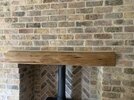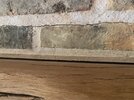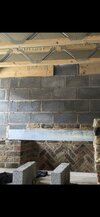- Joined
- 29 Oct 2022
- Messages
- 3
- Reaction score
- 0
- Country

Cracks have started to appear above oak mantle due to the wood shrinking over the last 6 yesrs since installation. It sits on a metal “shelf” as shown on the photos. The gap between the oak mantle and first layer of cement has increased over time as the wood has dried out and shrunk.
Is it just a matter of pushing cement into the gap to the width and length of the beam ? Obviously I would have to try and match up pointing colour to existing. Many thanks for any comments/help.
Is it just a matter of pushing cement into the gap to the width and length of the beam ? Obviously I would have to try and match up pointing colour to existing. Many thanks for any comments/help.




